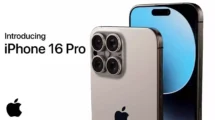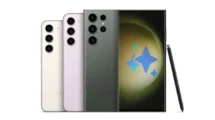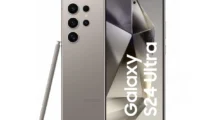Modern day smartphones are no longer the odd ones out in the world of cameras. While there’s no denying they are stifled by limitations owing to their skinny frames – smartphones now come equipped with cameras that offer remarkable image quality, a host of features to tinker with, and not to forget the sheer convenience to carry around in your pockets.
After the LG G5, the Huawei P9 is second smartphone launch this year featuring a dual-camera setup. Though unlike the LG G5, where the secondary camera primarily acts as a wide angle lens, Huawei’s take is on its dual-lens camera setup is a bit different. LG G5 gives you two separate cameras to take pictures, allowing you to switch between standard point and shoot, and the other for wide-angle panoramic shots. Huawei P9’s dual-camera setup mainly works together, with a 12MP primary RGB sensor bundled with a 12MP monochrome chip.
The RGB sensor takes care of color information, while the monochrome chip captures better detail and improved depth of field. According to Huawei, the combination of the two sensors eventually results in finer details, better depth, and improved low light photography.
Besides, the Huawei P9 camera gets certified by the highly-acclaimed lens maker Leica, which has created all the more hype about the smartphone. But is the Huawei P9 a quantum leap when it comes to smartphone cameras. Let’s dig into the phone’s camera and find out whether it lives up to its claims.
Image Quality in Bright Light
Snaps taken from the Huawei P9 in well-lit conditions were rich, detailed and vibrant. Colors pack a punch, and there’s enough contrast that you won’t need to tinker with an editing app. Exposure levels are usually on point in the brightest of conditions, and the advantage of the dual-camera setup is clearly evident in high contrast scenes.
The phone’s camera also features a ‘pro’ mode, which allows you to set ISO levels, shutter speed, autofocus (AF-S, AF-C, or MF) and white balance. Besides, you also get access to modes such as Monochrome, High Dynamic Range, Night Shot, Time Lapse, Slow Motion and more. The monochrome sensor belts out awesome black and white shots.
Also, the Huawei P9 allows you to select the aperture to adjust the depth of field. The wider the aperture, the more blurred the background. Also known as the bokeh mode, this feature is quite a hit and miss. The feature works well when the object is well defined and has clearer edges, however, it does struggle when the subject’s edges are not so clear. That said, it’s still one of the better depth of field simulations I’ve come across in any smartphone so far.
Panoramic and landscape shots also look crisp and sharp. Though they’re still not the best in class, as images look smaller and not as finely stitched compared to the likes of the iPhone 6S or the Galaxy S7.
Also, the Huawei P9 camera tends to crank up saturation and contrast levels. For instance, you’ll notice that the sky looks much bluer, or the green appears much greener than what it actually is.
Low Light Image Quality
Photos even retain that level of sharpness and details while taking pictures in the dark. As low-light shooting is bolstered by the F2.2 aperture, which essentially allows the lens to soak in more light. Shots taken in very dark conditions also manage to show texture details while keeping a check on noise levels. But it does’t give you those jaw-dropping low-lights you’d expect from a Leica branded camera.
Moreover, the lack of Optical Image Stabilization (OIS) means that when you need to take a longer exposure, your shaky hand movement reduces sharpness while shooting indoors or in low-light. On occasions, the P9’s camera tends to obscure a lot of details in challenging light conditions. In comparison, the likes of the iPhone 6S and the LG G5 are much better at retaining more detail in less than ideal lighting conditions.
Video Quality
In bright sunlight, the Huawei P9’s camera manages good levels of exposure and handles high-contrast scenes rather well. And just like in stills mode, videos shot with the P9 in bright light look sharp and detailed. Even in low-light conditions, the Huawei P9 does a good a job at churning out quality videos. While there are shades of noise levels in some areas of the video, overall the video quality looks quite clean.
Though, unlike its competitors that offer 4K recording, the highest resolution you get with the Huawei P9 is 1080p Full-HD. Having said that, videos shot with the Huawei P9 aren’t that far off from the competition. Even the sound quality in videos is pretty decent.
Besides, you can also switch to ‘Pro’ mode and manually tweak settings like ISO, shutter speed, AF modes, and white balance. It can also record slow-motion 720p videos which can be accessed through its dedicated icon on the mode screen.
Selfie Cam
The Huawei P9 packs an 8MP front-facing shooter with F2.4 aperture. Overall, the camera is capable of capturing pretty great selfies, though images show shades of haziness around the edges.
In low-light, however, images aren’t as sharp and detailed. Like many other devices, in poor lighting conditions the P9 automatically increases the brightness of its screens to trigger a flash-like effect. Images are usually good, but you do notice shades warmer skin tones.
Pros:
- Images look sharp and detailed
- Good contrast and punchy color reproduction
- Ability to save in RAW and JPEG formats
- Ease of use
- Snappy operation
- Host of manual control features
Cons:
- No OIS
- No 4K video recording
- Smaller panorama
- Bokeh effect lacks consistency
- Indoor Shots exhibit noise
Wrap-Up
I had a lot of fun shooting with the Huawei P9. It offers a wide array of manual controls that makes it much more feature-rich than most smartphone cameras. In fact, it’s pretty close to the best smartphone cameras out there. Top it up with its dual-lens camera setup and some unique photo modes – the Huawei P9 is an ideal choice for anyone who likes to play around with photos on their smartphones.
But don’t expect Leica-like image quality from the Huawei’s P9 dual-camera setup. After all, it is still a smartphone camera which usually have smaller sensors compared to a DSLR. Besides, the P9’s camera also shows signs of inconsistency. While some shots come out so good that make you go ‘Wow,’. But at times what you get is pretty mediocre, specially while shooting indoors or in low-light conditions.




